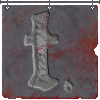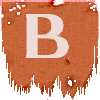Crafting is here. Crafting is not meant to replace normally loading equipment
or be a viable source of income, but it can still be quite rewarding.
Using different combinations of materials, you can create custom items
that can be very hard to duplicate. You can get lucky and create very powerful
items, particularly saving throw and stat improving equipment.
However, there are dozens of skills and hundreds of materials to choose from.
This can be very intimidating for a newcomer. Hopefully we can help you pick
what kind of items you wish to craft and what sort materials you will have
the most fun crafting with.
This article was written by the god Draak, and posted on Jan 17, 2018.
BACK - Alter Aeon Article Index
Crafting 101
Why Crafting?
The main advantage crafting offers is higher quality - items made by skilled
crafters are almost always WELL CRAFTED, and can often be EXPERTLY CRAFTED
or even MASTERCRAFT. This gives them a composite bonus that can rival artifacts,
and can save millions of gold in reforges.
Crafting is also a source of low-risk experience. Gathering materials can be done in the field, and (except skins for leathercrafting) don't require combat. Most crafting skills can be done while in resting (metallurgy being an exception) making them ideal low-pressure activities when cooling down after an exp or equipment run.
Crafting is also a source of low-risk experience. Gathering materials can be done in the field, and (except skins for leathercrafting) don't require combat. Most crafting skills can be done while in resting (metallurgy being an exception) making them ideal low-pressure activities when cooling down after an exp or equipment run.
Choosing a Skilltree(s)
There are four main crafting skill trees:
In addition to these trees, there are a host minor crafts, including heraldry, bonecrafting, stone knapping, druidic totem carving and many enchantment and brewing skills.
For our purposes, we are going to focus on the four major crafts.
If you are unsure of whether or not you want to pursue crafting, we recommend the woodcrafting skill. It costs relatively few practices, wood can be gathered almost anywhere and there is no gold cost when preparing materials. You can make weapons, shields and a few worn objects. If you have a friend that knows forging, they can craft upgrades such as studs and spikes for your woodcrafted weapons and rims for your shields, while you can make wooden handles for weapons they are creating.
- leathercrafting
- woodcrafting
- lapidary
- metallurgy
In addition to these trees, there are a host minor crafts, including heraldry, bonecrafting, stone knapping, druidic totem carving and many enchantment and brewing skills.
For our purposes, we are going to focus on the four major crafts.
If you are unsure of whether or not you want to pursue crafting, we recommend the woodcrafting skill. It costs relatively few practices, wood can be gathered almost anywhere and there is no gold cost when preparing materials. You can make weapons, shields and a few worn objects. If you have a friend that knows forging, they can craft upgrades such as studs and spikes for your woodcrafted weapons and rims for your shields, while you can make wooden handles for weapons they are creating.
Gathering Materials
There are several raw materials that are important for crafting. These are
leather, wood, stone and ore.
Hides for leathercrafting are obtained using the 'skinning' skill on the corpses of animals and monsters. The larger the creature, the larger skins you can get from its corpse. A higher skinning skill will also help you get larger skins. More powerful monsters will yield higher level skins. Creatures with heavy resistance to cold or magic will have skins with spellsave and coldsave, and creatures with furry pelts will have coldsave as well.
Wood for woodcrafting is collected using the 'gather wood' command. Wood is not harvested from living trees - it is dead, dried wood that is found on the ground. You can find wood from dozens of species of trees, each living in terrain appropriate for its kind. For example, cypress wood can be found in swamps, while mesquite can only be found in deserts, while others like pine and oak can be found nearly anywhere. Certain species can only be found in a single region of the world or on other planes. Forests and jungles have the most amount of available wood.
Gathering wood requires no skill, however, having the search skill will help you to find larger pieces of wood more consistently. There are variants of gather wood: 'gather staff' finds only long, skinny branches suitable for making staffs, canes and clubs, while 'gather stick' which seeks out twigs and sticks best suited for making arrows.
Lapidary and forging require stone and ore, which can be obtained with the low level 'mining' skill. Mining allows you to 'prospect' for mineral deposits and then 'excavate' them. There are many kinds of stone and ore that can be recovered. Stones can be cut into items using the 'lapidary' skill. Certain kinds of stone, such as rubies or diamonds, can be cut into gemstones if you have the 'gemcutting' skill. Ore can be smelted into ingots of metal with the 'metallurgy' skill. Ores can be of differing grades of purity, ranging from a 20% ratio of metal to ore to 100%. Similar to gathering wood, different kinds of stone can only be found in certain terrains. There are some rare gemstones that are only known from a few scattered deposits, while common stones such as granite or various kind of quartz can be found nearly anywhere.
You may sometimes find metals that are already refined into forms that cannot be forged without being smelted first. Objects that are type TREASURE and that are not otherwise wearable or useable sometimes can be melted down to make items.
Hides for leathercrafting are obtained using the 'skinning' skill on the corpses of animals and monsters. The larger the creature, the larger skins you can get from its corpse. A higher skinning skill will also help you get larger skins. More powerful monsters will yield higher level skins. Creatures with heavy resistance to cold or magic will have skins with spellsave and coldsave, and creatures with furry pelts will have coldsave as well.
Wood for woodcrafting is collected using the 'gather wood' command. Wood is not harvested from living trees - it is dead, dried wood that is found on the ground. You can find wood from dozens of species of trees, each living in terrain appropriate for its kind. For example, cypress wood can be found in swamps, while mesquite can only be found in deserts, while others like pine and oak can be found nearly anywhere. Certain species can only be found in a single region of the world or on other planes. Forests and jungles have the most amount of available wood.
Gathering wood requires no skill, however, having the search skill will help you to find larger pieces of wood more consistently. There are variants of gather wood: 'gather staff' finds only long, skinny branches suitable for making staffs, canes and clubs, while 'gather stick' which seeks out twigs and sticks best suited for making arrows.
Lapidary and forging require stone and ore, which can be obtained with the low level 'mining' skill. Mining allows you to 'prospect' for mineral deposits and then 'excavate' them. There are many kinds of stone and ore that can be recovered. Stones can be cut into items using the 'lapidary' skill. Certain kinds of stone, such as rubies or diamonds, can be cut into gemstones if you have the 'gemcutting' skill. Ore can be smelted into ingots of metal with the 'metallurgy' skill. Ores can be of differing grades of purity, ranging from a 20% ratio of metal to ore to 100%. Similar to gathering wood, different kinds of stone can only be found in certain terrains. There are some rare gemstones that are only known from a few scattered deposits, while common stones such as granite or various kind of quartz can be found nearly anywhere.
You may sometimes find metals that are already refined into forms that cannot be forged without being smelted first. Objects that are type TREASURE and that are not otherwise wearable or useable sometimes can be melted down to make items.
Preparing Resources
Some tips for preparing resources:
- the various craft skills have a 'check' function. Without a target, they will list all materials in your inventory that can be crafted with that particular skill ('forge check' will show all ores and workable metals, while 'woodcraft check' will show all gathered wood, etc). Using check on individual item will determine if it is a craftable material, what its basic properties are and may list what items it can be crafted into.
- when mining ore, it can be helpful to 'combine' the ore to save on inventory space and to allow you to smelt larger ingots of metal. This is especially useful for low-yield ores that are not heavy enough on their own to smelt. Certain other mined items can be combined and split as well.
- woodcrafted items require pieces of wood that fall within certain size and weight thresholds. If a piece of harvested wood is too long to be made into the desired item (as is often the case with branches, boughs and treelimbs), try the 'woodcraft halve' command to cut it into two roughly equal pieces that have half the weight and length. It a piece of wood is too massive to be useful (such as chunks, logs and tree trunks), try the 'woodcraft quarter' command to saw it into four roughly equal pieces that have one fourth the weight.
- skins from the same kind of creature can be combined with the 'leathercraft bundle' command.
- do not rune-carve or enchant resources. Many types do not allow this, and some materials cannot be crafted with after they have runes added, others will lose stats from enchantments or runes if crafted with. The crystal coat and unburden spells may also prevent items from being crafted with.
- watch for timers! skins and gathered woods have a limited lifespan and will rot if you do not use them after a length of time.
- watch your stats! Low intelligence and dexterity or negative luck may cause you to destroy an item you are crafting, and lowered constitution and strength will lessen your move regeneration, causing you to abandon projects uncompleted! The latter is especially destructive when forging - stopping in the middle of smelting or forging will cause the item you are working on to be destroyed, with no refund of gold! Do not attempt to craft if you have any curses on you!
Crafting Parts
Most leathercrafted armor and most woodcrafted and forged items can be used "as-is"
when finished. Some, however are only pieces for completing larger projects.
These include:
- forged armor studs
- forged armor spikes
- forged shield rims
- forged buckles
- forged grips
- lapidary grips
- forged guards
- forged crossbow hardware
- woodcrafted crossbow stocks
- woodcrafted grips, handles, hafts and poles
- lapidary gemstones
- forged jewelry can have metal or stone inlaid, or gemstones set into it
- a weapon with a guard can have a gemstone set into it
- lapidary and woodcrafted jewelry can have gemstones hung or set into it
- leather armor and whips can have studs or spikes added to them
- forged and leathercrafted armor can be lined with fur from pelts
- woodcrafted clubs and quarterstaffs can be inlaid with metal or set with studs or spikes
- woodcrafted canes can be set with lapidary orbs or grips of any sort and inlaid with metal or set with studs or spikes
- woodcrafted clubs, quarterstaffs and canes can be loaded with lead and other soft metals to increase their weight and dieroll
- woodcrafted shields can have forged rims added to them
- woodcrafted poles can have a leathercrafted sling added to them to make staff slings
- cups and various other sorts of tableware can be inlaid with stone or metal
Crafting Finished Items
Most woodcrafted items, lapidary items, leathercrafted items and forged armor
are in a finished state when completed. There are a few exceptions, most
notably crossbow stocks.
Crossbows are finished by adding forged crossbow hardware to a crossbow stock, using the 'woodcraft add' function.
Forged weapons, on the other hand, require multiple pieces to complete. Simple weapons, such as axes, hammers, maces and spears, require a woodcrafted handle, haft or pole to be mounted on. In addition, flails and dire flails require a chain. To complete a simple weapon, have the necessary items in your inventory and type 'forge finish' and the name of the weapon you want to complete.
Forged blades are similar to simple weapons, but most require a forged guard in addition to a handle and blade. Guards will contribute to a weapon's parry, but no other stats. Guards come in several varieties, and can only be forged from metals hard enough to make armor from. Many one-handed blades have a grip rather than a handle. These can be made from wood, stone or metal.
To see a list of available weapons and their damage types, type 'forge list weapons'. To see what pieces are necessary to make a particular weapon, type 'forge list <weapon name>'.
Crossbows are finished by adding forged crossbow hardware to a crossbow stock, using the 'woodcraft add' function.
Forged weapons, on the other hand, require multiple pieces to complete. Simple weapons, such as axes, hammers, maces and spears, require a woodcrafted handle, haft or pole to be mounted on. In addition, flails and dire flails require a chain. To complete a simple weapon, have the necessary items in your inventory and type 'forge finish' and the name of the weapon you want to complete.
Forged blades are similar to simple weapons, but most require a forged guard in addition to a handle and blade. Guards will contribute to a weapon's parry, but no other stats. Guards come in several varieties, and can only be forged from metals hard enough to make armor from. Many one-handed blades have a grip rather than a handle. These can be made from wood, stone or metal.
To see a list of available weapons and their damage types, type 'forge list weapons'. To see what pieces are necessary to make a particular weapon, type 'forge list <weapon name>'.
Upgrading Crafted Items
There are numerous ways to improve crafted items. Reforging with the gamble command
and adding runes or enchantments will alter the stats of most crafted items. Most
leathercrafted armor and some types of metal can be given bonus armor with the cleric
'consecrate armor' skill. Some items can be improved by adding upgrades.
Leathercrafted armor and melee weapons can be improved by adding forged spikes and studs with the 'leathercraft add' command. Forged buckles can also be added to leathercrafted belts. If you know the 'furrier' skill, you can use pelts to line leather armor with fur.
Woodcrafted melee weapons can be improved by adding forged spikes and studs with the 'leathercraft add' command. Woodcrafted shields can have forged rims added to them as well.
The 'metallurgy inlay' skill can take soft metals such as gold, copper, silver, platinum and their alloys and inlay them into forged armor, forged jewelry and tableware of metal, wood and stone. If you know the 'furrier' skill, you can use pelts to line forged armor with fur.
You can use the 'lapidary add' command to inlay most types of raw, uncut minerals onto tableware such as cups, mugs and bowls and forged jewelry such as rings and headgear.
This command can also add gemstones to jewelry and the guards of bladed weapons. This is one of the most powerful upgrades available, as a weapon can have stats from its guard, the metal of its blade, the wood of its handle and the gem mounted to it.
It is very important to watch the quality level of items you are upgrading, especially with gemstones. The quality of the base item is used - adding a MASTERCRAFT chocolate diamond to a WELL MADE tin tiara may cause stats from the diamond to be lessened or even lost completely. Likewise, adding a WELL MADE calcite cabochon to a MASTERCRAFT electrum band ring is probably not going to fill the ring's composite, i.e. its potential stats, to the maximum. It is usually best to upgrade items with materials that are of approxiamately equal quality.
Many items can have additional composite added using enchant artificer, enchant legendary and enchant alignment. It is best to use these enchant before adding upgrades, to open up the most composite possible so effect can transfer to their fullest.
Leathercrafted armor and melee weapons can be improved by adding forged spikes and studs with the 'leathercraft add' command. Forged buckles can also be added to leathercrafted belts. If you know the 'furrier' skill, you can use pelts to line leather armor with fur.
Woodcrafted melee weapons can be improved by adding forged spikes and studs with the 'leathercraft add' command. Woodcrafted shields can have forged rims added to them as well.
The 'metallurgy inlay' skill can take soft metals such as gold, copper, silver, platinum and their alloys and inlay them into forged armor, forged jewelry and tableware of metal, wood and stone. If you know the 'furrier' skill, you can use pelts to line forged armor with fur.
You can use the 'lapidary add' command to inlay most types of raw, uncut minerals onto tableware such as cups, mugs and bowls and forged jewelry such as rings and headgear.
This command can also add gemstones to jewelry and the guards of bladed weapons. This is one of the most powerful upgrades available, as a weapon can have stats from its guard, the metal of its blade, the wood of its handle and the gem mounted to it.
It is very important to watch the quality level of items you are upgrading, especially with gemstones. The quality of the base item is used - adding a MASTERCRAFT chocolate diamond to a WELL MADE tin tiara may cause stats from the diamond to be lessened or even lost completely. Likewise, adding a WELL MADE calcite cabochon to a MASTERCRAFT electrum band ring is probably not going to fill the ring's composite, i.e. its potential stats, to the maximum. It is usually best to upgrade items with materials that are of approxiamately equal quality.
Many items can have additional composite added using enchant artificer, enchant legendary and enchant alignment. It is best to use these enchant before adding upgrades, to open up the most composite possible so effect can transfer to their fullest.
BACK - Alter Aeon Article Index










